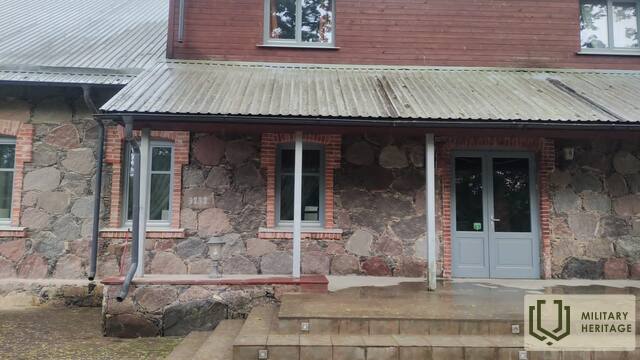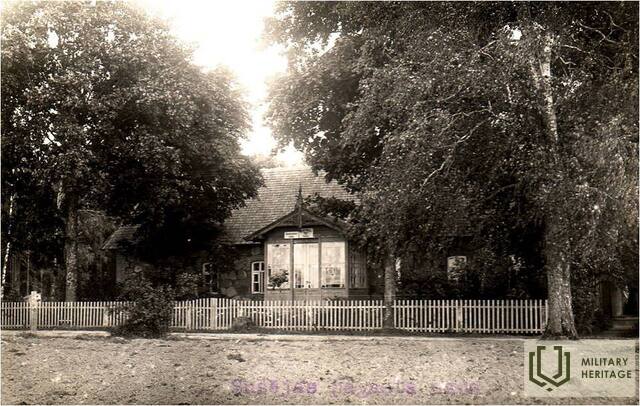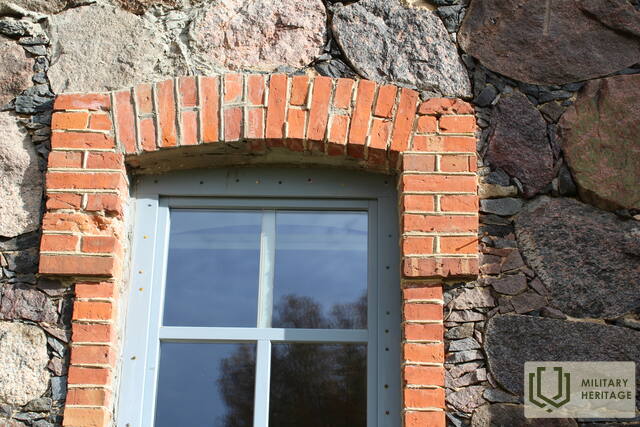Former Susēja parish house, site of attack by national partisans on July 7, 1945
Battle site


 159
159



Today, the former Susėja parish house houses the Sanssouci residence center. The facade of the building still bears traces of the attack left by bullets fired by national partisans during the attack on July 7, 1945.
The former Susēja parish house, which at that time functioned as the local executive committee of the Soviet occupation authorities, suffered an attack by the Sēlija national partisans on July 7, 1945. The attack on the Susēja executive committee was part of a wider national partisan campaign and took place simultaneously with the attacks on the Vilkupe butter factory and the house of the destroyer Kaunackas.
According to the instructions of the commander of the Susėja national partisan group, Albert Kaminskis (1920-1946), the Forest Brothers were to destroy the security of the local executive committee, take weapons, militia uniforms, documents and damage telephone communications. About 17 Forest Brothers under the leadership of the Lithuanian partisan commander Jozas Kuveikis participated in the attack on the Susėja executive committee. The battle lasted 15-20 minutes, one Lithuanian partisan fell during the firefight, and on the other side - a fighter of the destroyer battalion Jānis Kakarāns. During the firefight, the windows of the executive committee were broken and the telephone was damaged.
The second attack on the Susēja Executive Committee took place on July 16, 1945, when a prolonged firefight took place between the Forest Brothers and fighters of the destroyer battalion who had sought refuge in the Executive Committee building. During the battle, a group of Soviet soldiers came to the aid of the latter, who opened machine-gun fire from the flank and forced the partisans to retreat. At least five Forest Brothers and five destroyers fell in the battle. The attacks on this administrative object of the occupation power confirmed the nature of the armed resistance of the partisan war and were a warning about the people's resistance to the Soviet occupation power.
Used sources and references:
H. Bruņinieks. Cheating Death. Riga: Latvian Media, 2022, pp. 79-94, 129.
https://karavirukapi.blogspot.com/2022/02/aknistes-pagasta-pieminas-akmens.html
Related timeline
Related stories
Selija's forest brother settlement in the Sūpe swamp
The Sūpes swamp is associated with the sites of national partisan settlements and battles, which were formed through the interaction of people and places. It is described in the ballad of the exiled Latvian writer Alberts Eglītis about the events in his native Sūpes swamp “In Moss and Mud” - a tribute to the Sūpes swamp partisans:
… “In 1945, as autumn glowed in the swamp -
On Pokļevinskis' birthday, Lieljānis shares at dinner:
Beer fermented in willows,
The Romulans worship butter,
I dry my mother's caraway bread,
Dried ham in March cuts,
And Stuchka's onions,
Ildzeniece cheese.
Rooms in resinous walls
And lightning has struck hearts,
And in eleven souls languish-
"The roots that have rotted in the ground..."
This interpretation of the past, with its post-World War II events, included human testimonies, expressions of spirit, and value systems. It recalls the popular support for the national partisans, whom the occupying power could not defeat so easily.







